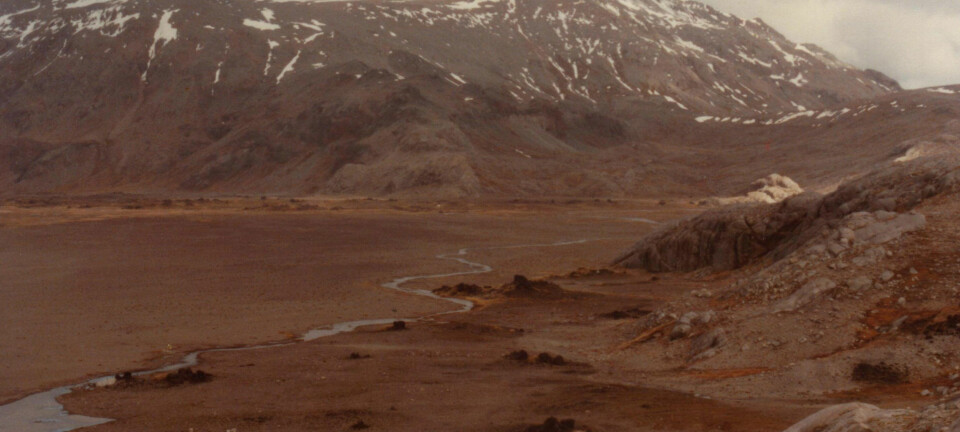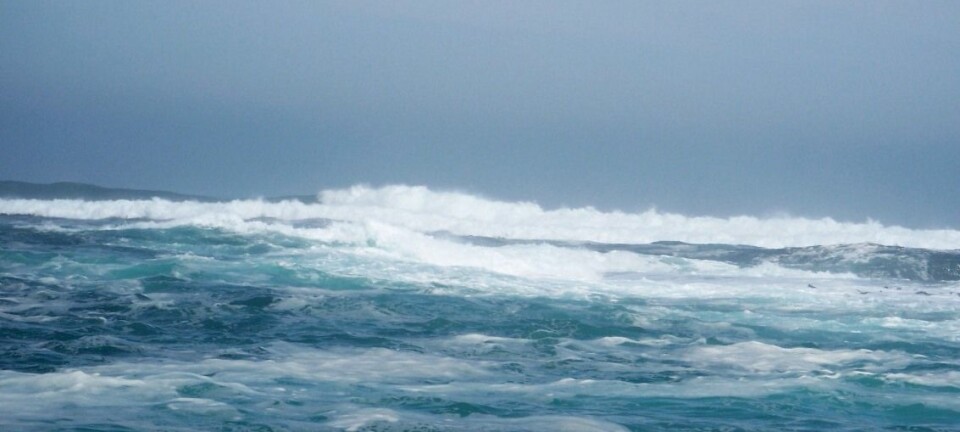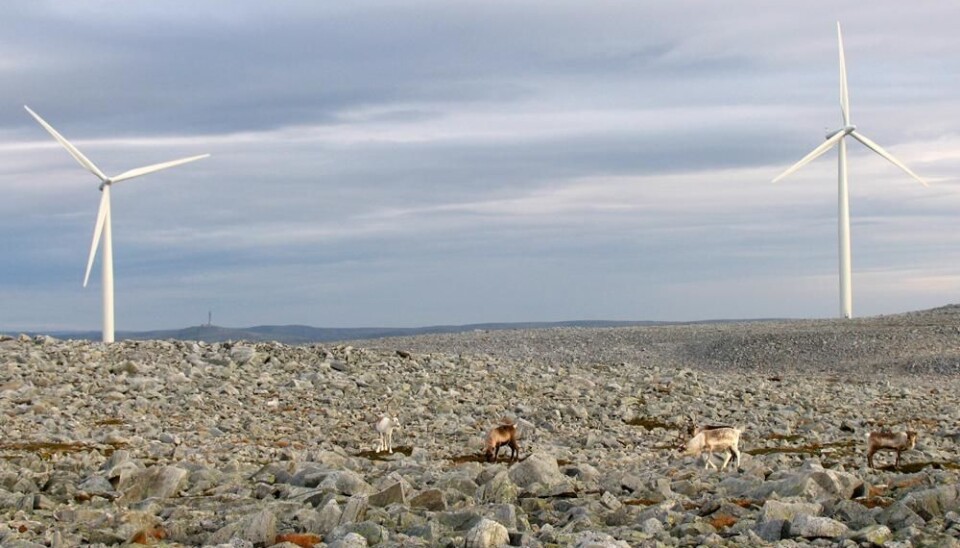
Windpower? Oh, my deer!
Scientists don’t think a windmill park will bother reindeer in their summer grazing areas. But local reindeer herders fear their animals could be scared by the traffic and people.
Denne artikkelen er over ti år gammel og kan inneholde utdatert informasjon.
Long-term analyses have been made in several areas in Norway to determine whether windmill parks pose a problem for reindeer husbandry.
The first results are now ticking in – from a study at Nordkinnhalvøya in Finnmark, Norway’s northernmost county. The researchers have found no evidence that windmills have an impact on reindeer migration patterns.
But local reindeer owners have their doubts about this research, which they think could have drawn more benefit from their local knowledge. They also think traffic along the road to the windmill park will frighten their reindeer.
Perfect for research
The area in question is on the tip of Nordkinnhalvøya which consists of two peninsulas. The Skjøtningsberg Peninsula is to the north. It is composed of barren terrain with heath growing on fairly naked bedrock. The land is no less harsh than the Dyfjord Peninsula to the south but there you can also hear the whirling of the blades from 17 wind turbines.
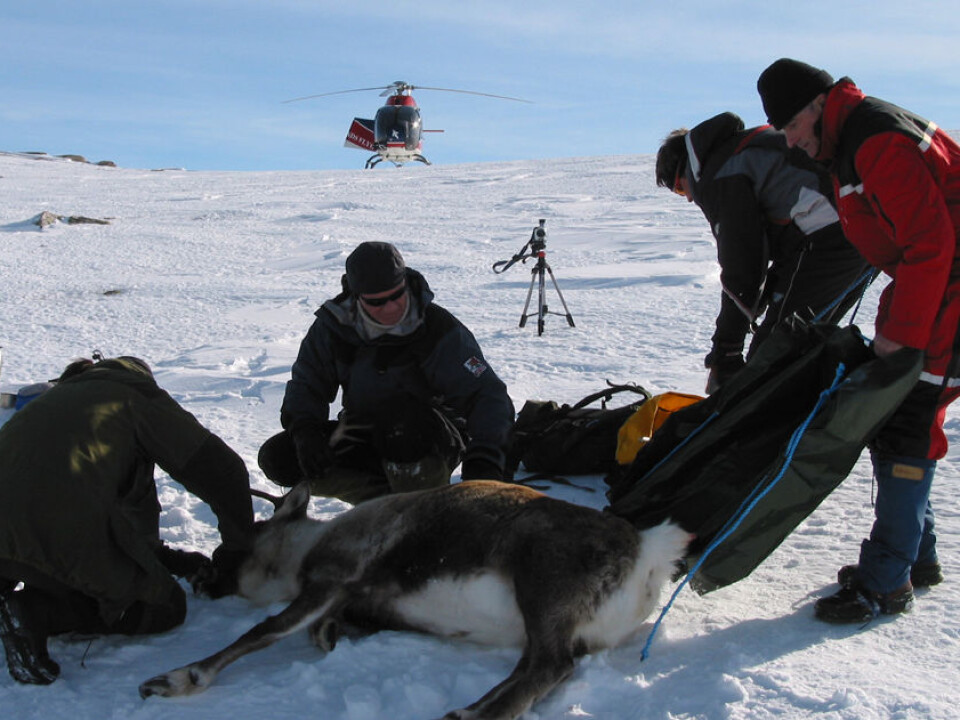
This is a perfect setup for comparison research.
The key question − do tame reindeer get the jitters near the nearly 40-metre long rotor blades as they swoosh through the air like giant knives?
The way to find out? See if the animals follow different routes on the two peninsulas – one with windmills and one without.
Small margins
“Reindeer owners have been apprehensive about windmill parks impacting their livelihood for a long time. That’s why we started the research project VindRein,” says Jonathan Colman.
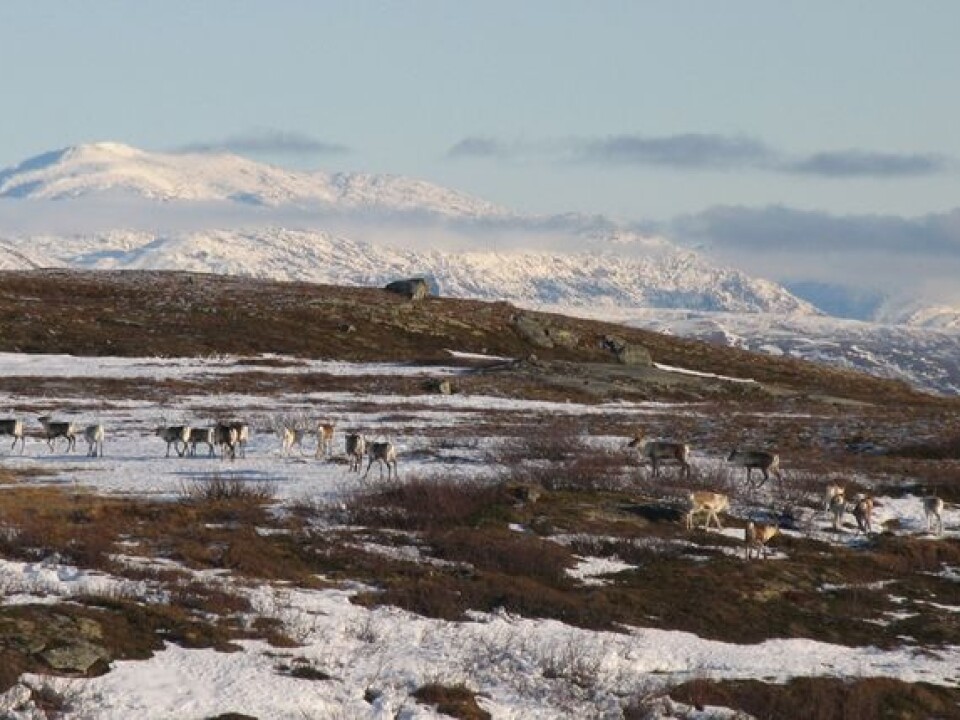
He’s an associate professor at the Department of Ecology and Natural Resource Management at the Norwegian University of Life Science, as well as a researcher at the University of Oslo’s Department of Biology and the head of the VindRein Project.
“Reindeer live in tough conditions. Time and energy the animals spend avoiding people instead of grazing can never be regained,” he says.
What’s more, good grazing territory in this Arctic climate is limited and the animals have to make maximum use of it to stand a chance of putting on weight and surviving.
“The margins are small. Worst case, if the reindeer are disturbed it can cost them their lives. That’s why this research is so important.”
Not found to be a problem
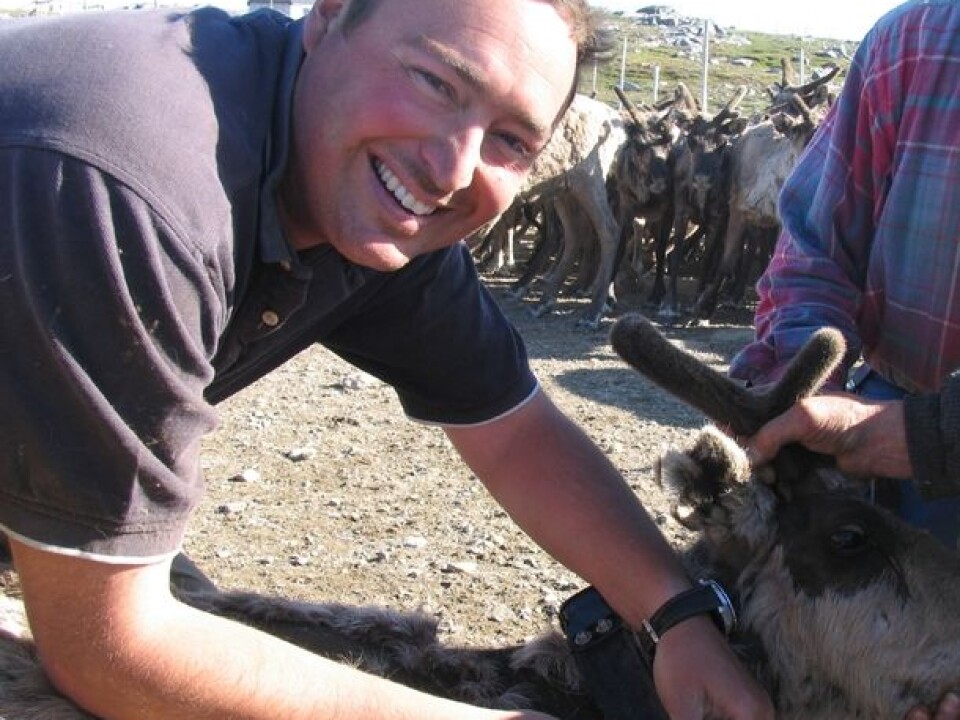
The windmill facilities on the Dyfjord Peninsula were built in 2006. Colman and his colleagues manned lookout posts in strategic spots on both peninsulas from the same year on.
Would the windmills scare the reindeer and make them veer off from their traditional migration routes between grazing grounds?
“We were surprised by the results,” says Colman.
It turned out that the windmills didn’t hinder the reindeer. Even during the construction period the herds only travelled slightly less past the windpower facilities.
Reindeer shy of traffic
Modern windmill parks run automatically. Once they’ve been erected and are operating they don’t require much human intervention, coming and going. But reindeer owners still think the facilities can have a disturbing effect.
“A construction road was built in the area. That means there will naturally be some traffic of hikers and cyclists,” says Ellinor Guttorm Utsi, the head of a local Sami reindeer husbandry group.
Previous research could back up her statement. It’s been shown that roads and power lines can act as hindrances for reindeer.
Different kinds of obstructions
Colman thinks that discerning between various types of hindrances is crucial in this context.
“We are the first researchers to make a clear distinction between fences, snow banks along roads and other physical obstructions on the one hand and elements that frighten the animals on the other,” he says.
“We wanted to chart such hindrances that could scare the reindeer and alter their habits. So we’ve given special attention to how the reindeer cross the peninsula past the windmill park, and whether they used the areas on either side equally.”
Conflict with reindeer owners
The researchers at Nordkinn have come into conflict with representatives for the reindeer owners in this particular area.
They have had trouble obtaining local knowledge from the owners in the area which could improve analyses and interpretations of the research results.
Colman says this is regrettable and he can document several attempts at getting the reindeer owners involved in the project with ample deadlines for responses to queries.
Despite such limitations, overall contact with the local reindeer owners has been positive and their constructive criticism has bolstered the project and research methods, according to Colman.
He also stresses that co-operation has been excellent in the other parts of the region that were studied.
Counting droppings
“We’ve been researching the impact across extensive stretches of land. This allows us to chart avoidance areas. which are areas that reindeer shy away from during normal grazing,” says Colman.
But other methods are required. It wouldn’t have been feasible to sit at posts with binoculars and notebooks year round. So the researchers chart avoidance in two ways, one high-tech and one low-tech: GPS and counting reindeer droppings.
“By counting droppings you get an approximation of how many animals are in a given area within a certain period,” he explains.
Long-term view
A disadvantage with this low-tech method is that reindeer droppings decompose at different rates, depending on the weather. Reindeer owners have also pointed out that when reindeer are frightened, they relieve themselves more. This can make it appear as if more reindeer have been around than was really the case.
However, the scientists say that this occurs primarily when the animals are suddenly startled by humans or predators in the terrain, and the behaviour doesn’t apply to fixed installations like a windpower park.
They don’t think this variation has much impact across larger areas.
“On a small scale, counting droppings can be an uncertain method. But it has been used for many years in research. It’s particularly effective in making comparisons among various areas within a given year. This is the point,” says Colman.
“When you are charting avoidance you need to make notations for a long time both before and after the construction of windpower facilities. It’s only then that we can level off short-term variations and get a reliable perspective, seeing what effect the windpower construction has had.”
--------------------------------
Read this article in Norwegian at forskning.no
Translated by: Glenn Ostling







